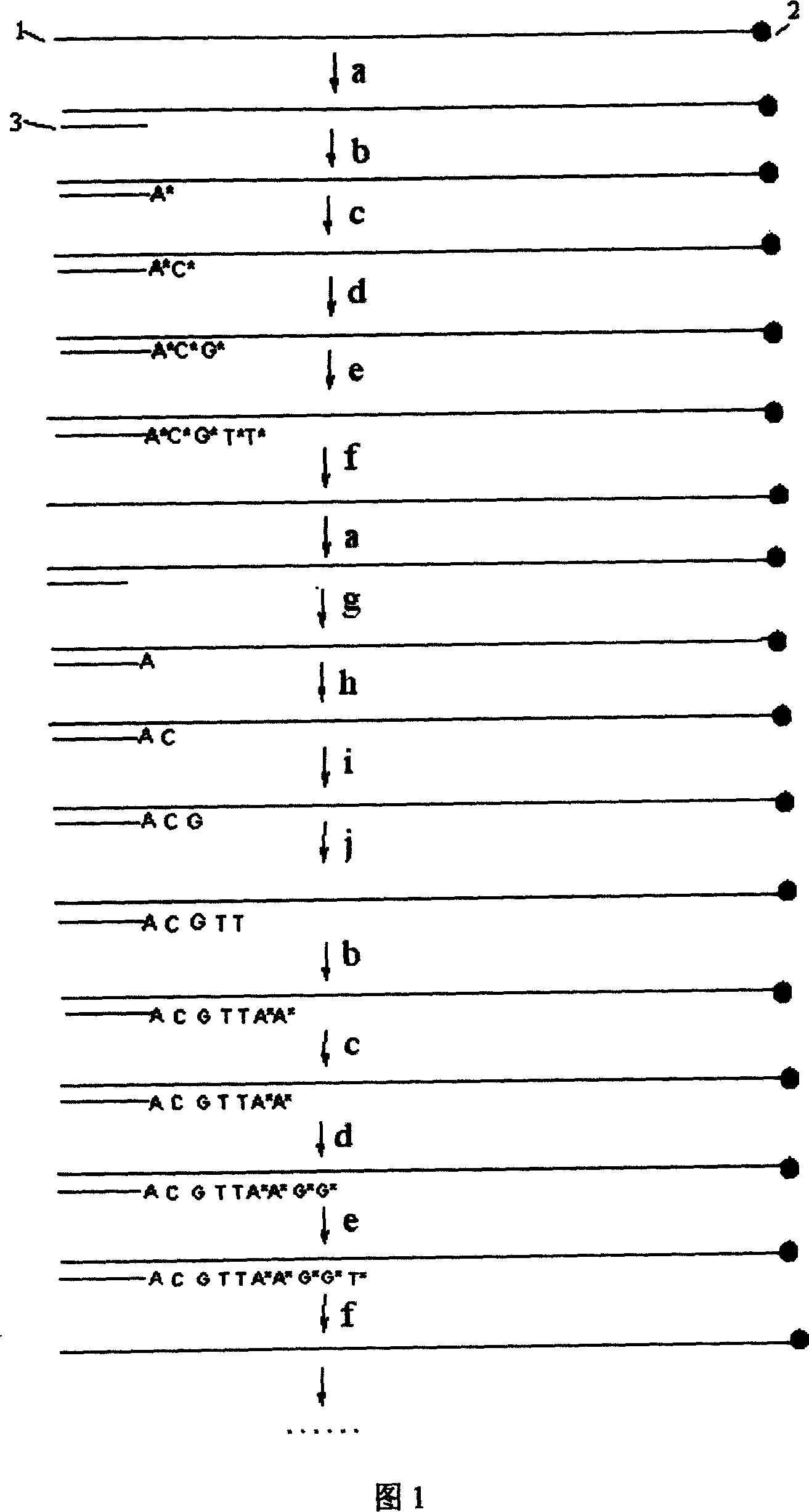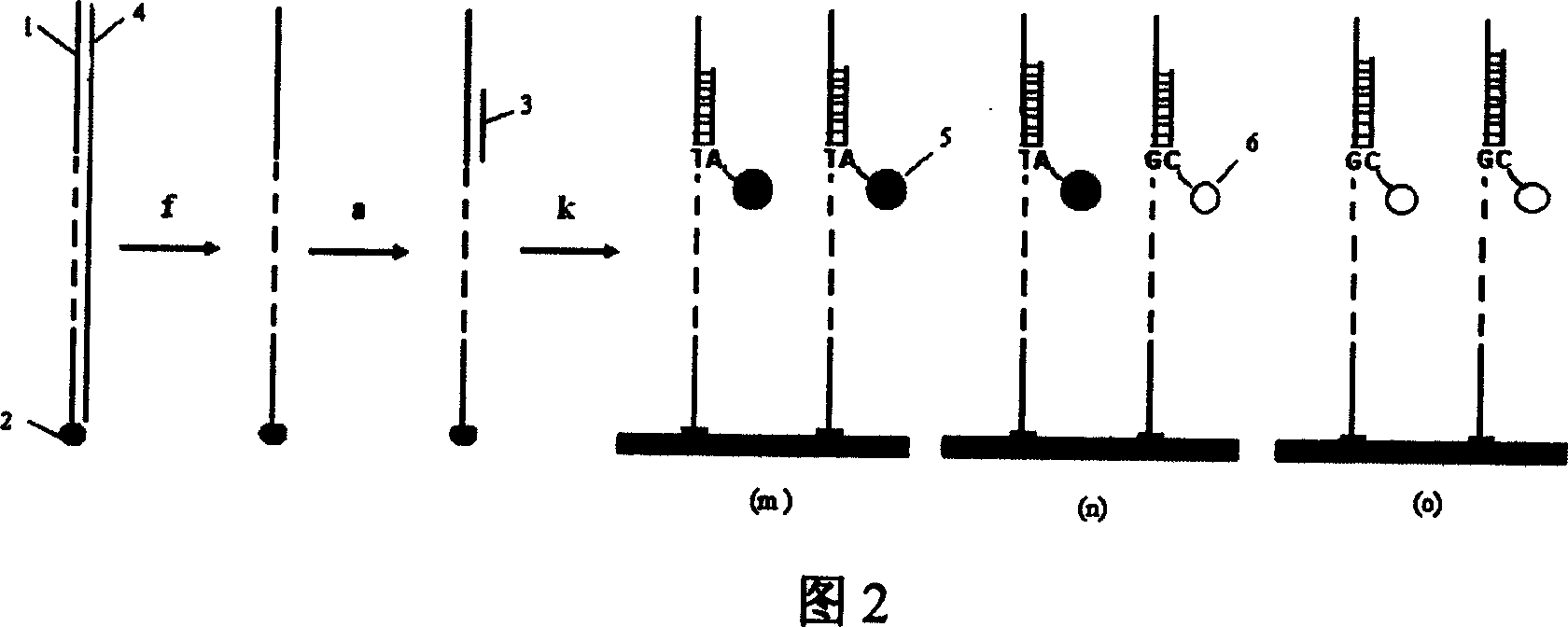Method for extensional sequencing DNA by circular crossbreed
A technology of DNA sequencing and DNA sequence, which is applied in the direction of biochemical equipment and methods, microbial measurement/inspection, etc., can solve the problems of increasing error extension information, accumulation of markers, reducing the number of templates, etc., to achieve the goal of increasing error extension Accurate determination of information and sequence, and the effect of not serious cumulative effect
- Summary
- Abstract
- Description
- Claims
- Application Information
AI Technical Summary
Problems solved by technology
Method used
Image
Examples
example 1
[0022] Example 1: The cycle hybridization-fluorescence extension sequencing method determines a DNA fragment containing the SNP site number rs11053646 in the human genome,
[0023] With reference to accompanying drawing 1, design a pair of PCR primer, wherein a primer has modified acrylamide group. PCR primers are used to amplify a DNA sequence fragment containing SNP site number rs11053646 in human samples (such as blood, saliva, etc.). The PCR product is fixed on a glass slide by polymerization method, and the unfixed PCR chain and other impurities are removed by denaturation and electrophoresis methods to obtain a pure DNA chain. One primer, unmodified, hybridizes to the immobilized DNA template.
[0024] Under the extension reaction conditions, according to the order of A, G, C, T, one base is added each time, and the fluorescently labeled monomer is added for one round, until the change in fluorescence is added each time after the labeled monomer is added and the polymer...
example 2
[0027] Example 2: Determination of a DNA fragment comprising the SNP site number rs11053646 in the human genome by cycle hybridization-pyrosequencing.
[0028] Referring to accompanying drawing 1, prepare the sequencing template according to the method of Example 1, and complete hybridization with the sequencing primer.
[0029] According to the order of A, G, C, T, add one base each time and add unlabeled monomers respectively, and judge whether the extension and the light intensity of the base occur according to whether the light and light intensity are generated in the pyrosequencing system under the extension reaction conditions The number of extensions, so it can be inferred that the DNA template sequence determined in this hybridization is AAG ACT GGA TCTGGC ATG GAG AAA ACT G. When the amount of light change cannot reflect the number of extended bases, the pyrosequencing of this hybridization is stopped.
[0030] The sequencing primers extending the above 28 bases were ...
PUM
 Login to View More
Login to View More Abstract
Description
Claims
Application Information
 Login to View More
Login to View More - R&D
- Intellectual Property
- Life Sciences
- Materials
- Tech Scout
- Unparalleled Data Quality
- Higher Quality Content
- 60% Fewer Hallucinations
Browse by: Latest US Patents, China's latest patents, Technical Efficacy Thesaurus, Application Domain, Technology Topic, Popular Technical Reports.
© 2025 PatSnap. All rights reserved.Legal|Privacy policy|Modern Slavery Act Transparency Statement|Sitemap|About US| Contact US: help@patsnap.com


